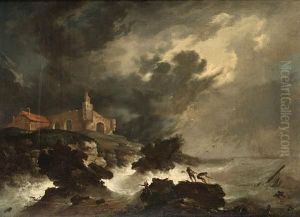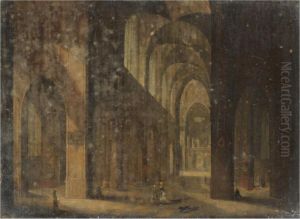Johann Sigmund Keller Paintings
Johann Sigmund Keller was a German painter and engraver born in 1688 in the town of Ulm, located in the historical region of Swabia, present-day Baden-Württemberg, Germany. Though not as widely recognized as some of his contemporaries, Keller made contributions to the art world during the Baroque period, which was characterized by dramatic expression, elaborate ornamentation, and grandeur.
Keller's artistic journey is less documented than that of many other artists of his era, and as such, specific details about his apprenticeship and early influences remain obscure. However, it is known that he was active during the early 18th century when the Baroque style was flourishing across Europe, including within the Holy Roman Empire, to which the city of Ulm belonged.
Throughout his career, Keller worked on various commissions, including religious-themed paintings, portraits, and possibly altarpieces for churches. His style would have been influenced by the significant Baroque artists of the time, such as Peter Paul Rubens or Rembrandt, although he would have interpreted the style with his own regional and personal nuances.
Engraving was another area where Keller demonstrated his skill. Engraving was a popular art form in the 17th and 18th centuries, as it allowed for the reproduction and dissemination of artworks and illustrations for books. Keller's engravings would have contributed to the spread of artistic and cultural ideas during his lifetime.
Johann Sigmund Keller passed away in 1757. While his work may not be as well remembered or celebrated as that of the major artists of the Baroque period, it remains a part of the rich tapestry of European art history. His contributions reflect the regional expressions of the Baroque style and provide insight into the artistic endeavors present in the smaller cities of the Holy Roman Empire during the 18th century.

